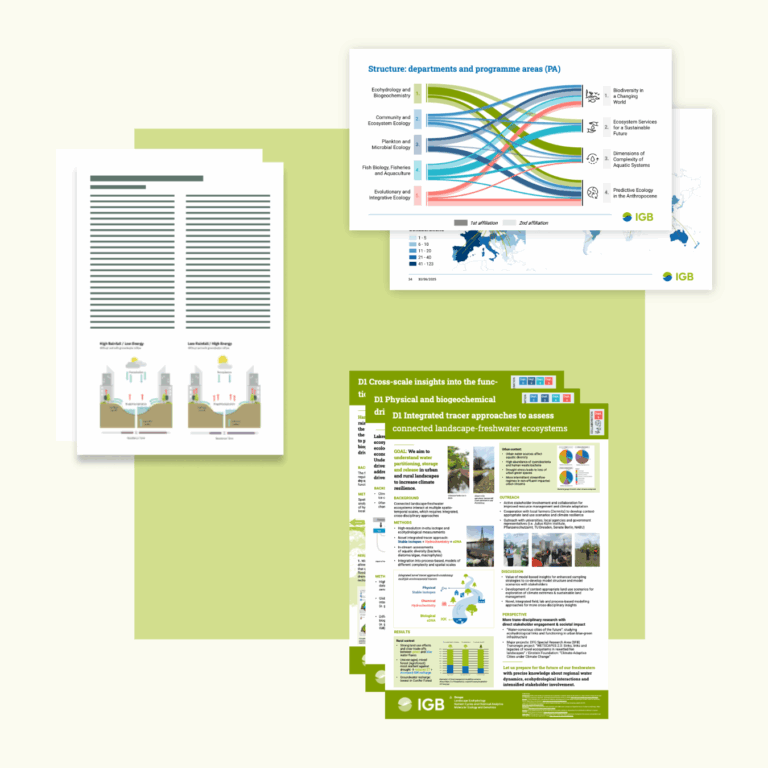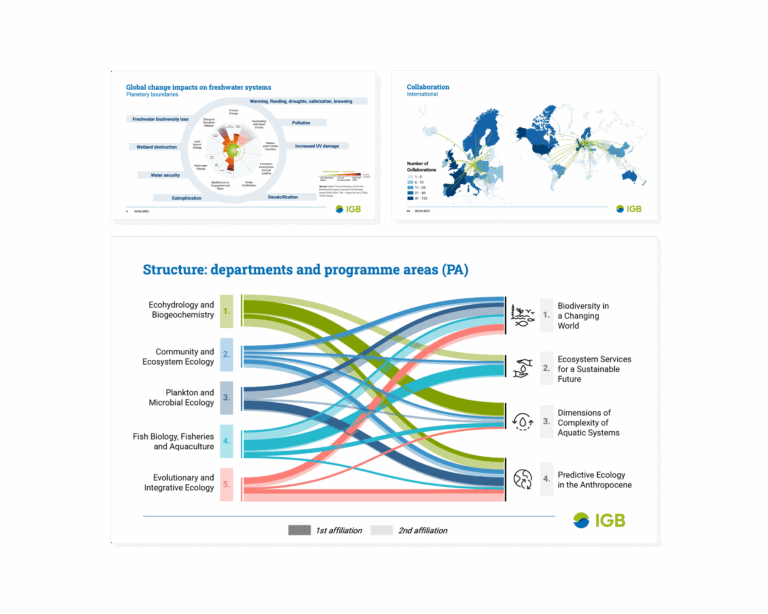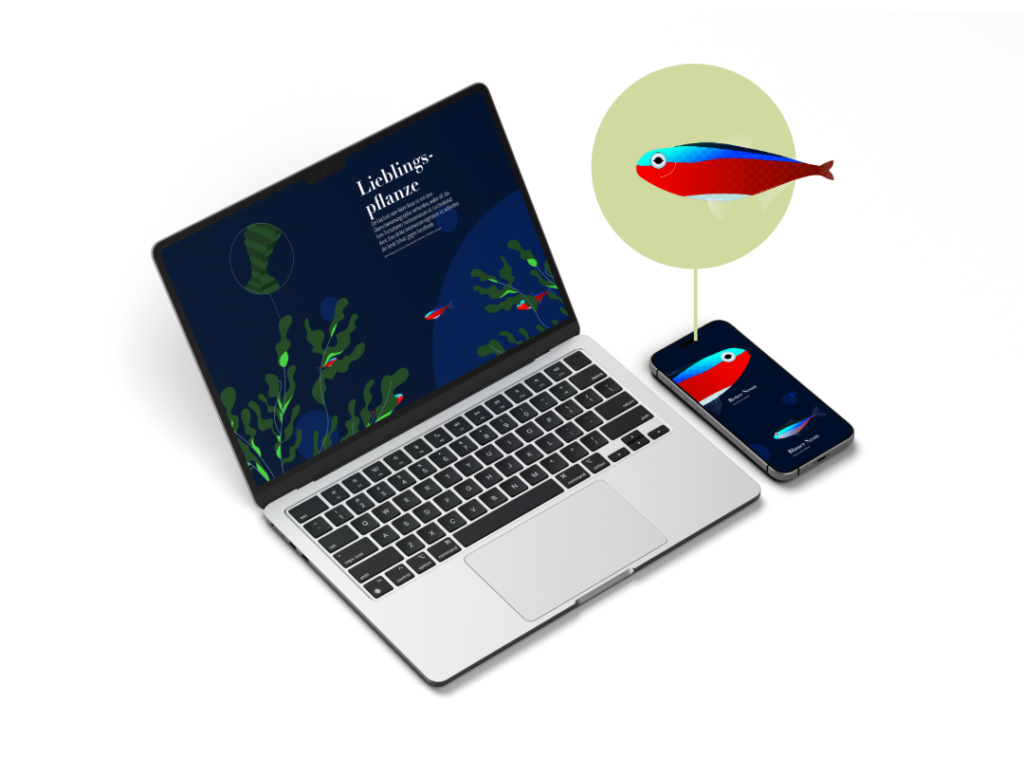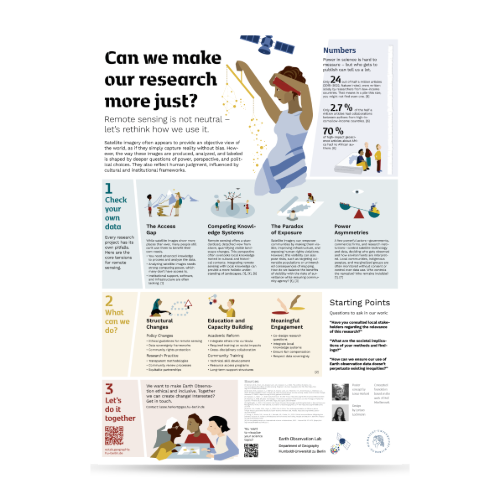During my studies, I gained knowledge in sustainability research with a focus on transdisciplinary research, system-thinking, and values-thinking. These approaches have proven valuable for solving complex problems in various contexts.
What can I help you with?
Visual Communication support for Science
I offer well-thought-out support for your communication project – from the first draft to the final publication. You bring your expertise and themes, I bring the design skills to make them shine. Together, we create clarity and impact.


Clarify & CONCEPTUALIZE
Before creating visuals, we clarify what is truly needed. Who do you want to reach, and what is your core message? Together, we develop a clear concept that ensures your visuals are purposeful and effective.

Visualize & Layout
Scientific visuals are built step by step. I guide you through an interactive process, offering feedback opportunities along the way. A visual gains its full impact when embedded in a broader context, and I enjoy shaping layouts that bring clarity and coherence to your project.

Package & Publish
I deliver your visuals in all the formats you need—ready for presentations, reports, websites, or print. If printing is required, I handle the details, so you can focus on sharing your work with confidence.
Why Use Science Visuals?
Boost your Impact
Today, research success is closely tied to how well you communicate. From grant proposals to publications, presentation matters. Clear visuals increase your visibility and ensure your work isn’t overlooked or forgotten.
Value your own Work
You’ve invested years of effort into your projects—yet results can easily fade once a project ends. Well-crafted visuals highlight the value of your achievements and keep them memorable long after the research is complete.
Be understood
Research has little impact if it isn’t understood. By visualizing results, you help stakeholders, policymakers, and the wider public connect with your findings—and integrate them into real-world decisions and actions.
And for What?
Science visuals work best, when embedded into nice publication formats. As a graphic designer and illustrator I am happy with helping you with all the steps of the process.
Project summaries
Info
Material
Power
Points
Maps
Journal Articles
Poster
Graphical Abstracts
My Scientific Background
Why work with me?
With a background in Geography and Sustainability Science, I know the realities of research first-hand – from fieldwork to data analysis and project collaboration. I’ve worked in academic contexts at the Baltic University Programme, IGB Berlin, and Humboldt University.
Today, I combine this scientific foundation with more than 3 years of professional design experience. My goal: to help researchers communicate their work with clarity and impact.
B. SC. Geography
Thanks to my geography studies, I gained valuable foundational knowledge in climatology, geomorphology, human geography, urban planning, and Earth observation.
M. SC. Sustainability Science
Water FOcus
I wrote my bachelor’s thesis in Prof. Dörthe Tetzlaff research group, which studies the ecohydrological behavior of catchments across spatial and temporal scales, focusing on water storage and release in landscapes.
Ecology
My enthusiasm for ecology emerged quite late, but today I am fascinated by our living environment. I completed several modules in landscape ecology and biogeography.
RStudio and QGIS
Two very handy tools I learned during my studies were RStudio for statistics and QGIS for mapping. They have proven useful in many cases since then.
ESD |Gamefied Learning
Traditional teach often is not equipped to achieving the change we need. For my Master thesis I developed a learning game based on extensive work in the field of Education for Sustainable Development
FAQ Science
Are you a researcher looking to get the attention your work deserves? Here are the most common questions on how infographics and science illustration.
How can information design help my research?
Improved Comprehension: Clear and illustrative visualizations make complex data and relationships easier to understand—not only for peers in your field but also for interdisciplinary teams and interested non-experts.
Increased Impact: Professionally designed infographics and visual abstracts make your research findings more engaging. This enhances your visibility in scientific publications, conferences, and online platforms, ultimately boosting the impact of your work.
More Clarity for Yourself: Well-structured visualizations help you recognize the value of your own work and can lead to new perspectives. This can accelerate the research process and lead to fresh insights.
Promoting Interdisciplinary Collaboration: Precisely crafted visualizations make complex content more accessible, facilitating communication between different disciplines. This enhances the effectiveness of interdisciplinary projects.
Where can I use infographics and scientific illustrations in my research?
Scientific Articles and Journals:
Visual abstracts and infographics can be used as supplementary materials in scientific articles to concisely summarize complex findings and improve the flow of reading.
Conferences and Poster Sessions:
Professionally designed scientific posters help you present your research findings effectively at conferences. By incorporating interactive elements, you can stimulate discussions and provide additional explanations afterward.
Online Platforms and Research Websites:
Interactive visualizations and animations offer a dynamic way to illustrate data and processes on digital platforms. These formats are ideal as supplementary materials for published papers or as standalone projects in online repositories.
Teaching and Public Outreach:
Animations and infographics can be used in lectures, workshops, or public science events to make complex content more understandable and accessible.
Social Media and Blog Posts:
Short-format visualizations help you disseminate research findings on social networks or blogs, reaching a broader audience, including non-experts.
How advanced does my research need to be before I can reach out to you?
Come as you are. Every stage has its advantages.
The earlier you reach out, the more strategically we can design your communication tasks. In the early stages, I can support you with grant writing and budget planning to minimize bureaucratic workload. The more advanced the project, the more we can focus on leveraging existing results and maximizing their impact.
Where can I find funding for communication services?
There are increasingly more funding opportunities for communication materials. Here are a few examples:
Project Budgets and Grants:
Many funding programs support the dissemination of research findings, allowing communication activities to be included directly in the project budget.
University and Institutional Funding:
Many institutions provide their own funds or grants for public outreach and science communication.
Collaborations and Special Programs:
Partnerships with industry or specialized funding programs also offer additional financing opportunities.
Do you also help with writing grant applications?
Yes, depending on the grant application and field of research, I am happy to provide compelling arguments and scientifically grounded approaches that can be used in the application.


